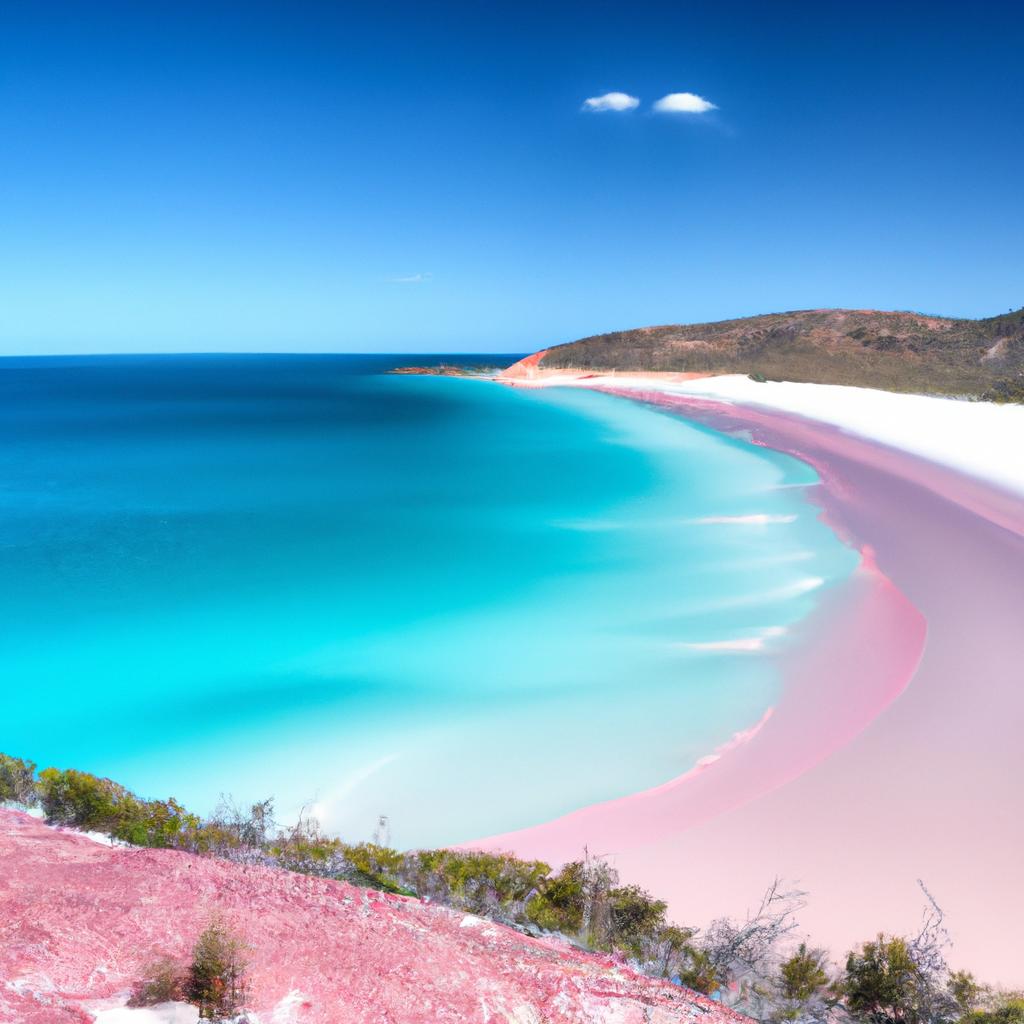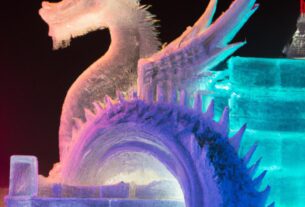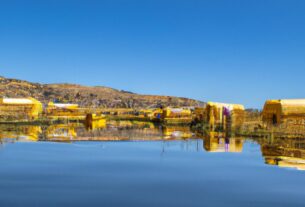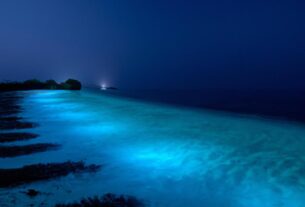Are you in search of an extraordinary and awe-inspiring travel experience? Look no further than Australia’s pink sand beaches! These remarkable beaches offer a sight like no other, with sands that range from delicate shades of pink to deep magenta. But beyond their stunning beauty, what is the story behind these remarkable beaches?
Pink sand beaches can be found all around the world, but they are particularly prominent in Australia. The pink hue comes from a tiny organism called foraminifera, whose reddish-pink shells are crushed up and mixed in with the sand. The result is a breathtaking and uncommon visual spectacle that attracts visitors from all corners of the globe.
However, there is more to pink sand beaches than meets the eye. For many Indigenous Australians, these beaches hold profound cultural and spiritual significance. For instance, the pink sands of Honeymoon Bay in Western Australia are believed to represent the blood of a Dreamtime ancestor. These beaches are not merely tourist attractions but serve as vital links to the country’s history and cultural heritage.
So, whether you’re a beachcomber, a nature enthusiast, or seeking a truly unique travel experience, Australia’s pink sand beaches are an absolute must-visit destination. Prepare yourself to embark on a journey of exploring the beauty and significance of these astonishing beaches.
The Science Behind the Phenomenon of Pink Sand
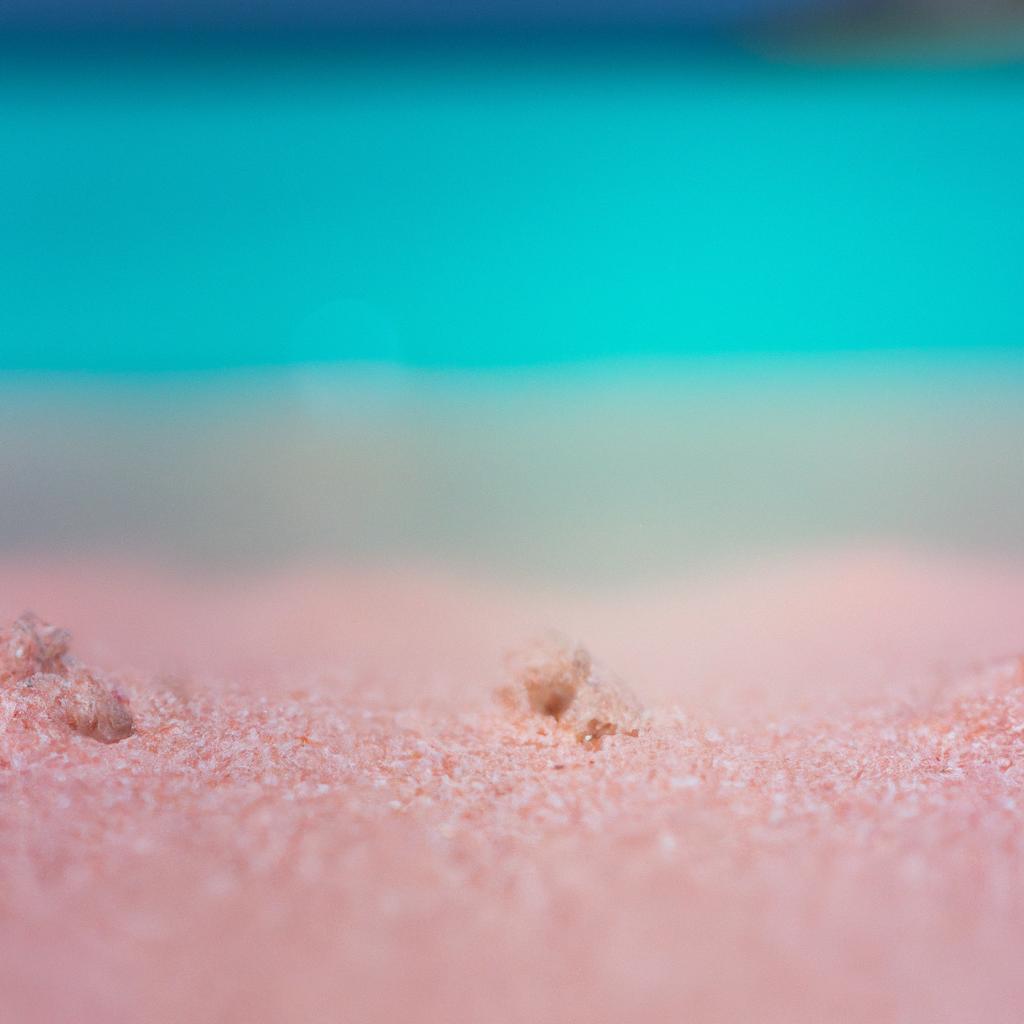
Ever wondered about the formation of pink sand? The process behind it is truly fascinating. Let’s delve deeper into the science that results in these exceptional beaches.
How Pink Sand is Formed
The pink color of these beaches emerges from a microscopic organism called foraminifera. These tiny creatures possess hard pink or red shells that accumulate on the ocean floor. Over time, waves break down these shells and mix them in with the sand, creating the beautiful pink hues that grace these beaches.
Factors that Contribute to the Pink Hue
The color of the sand can vary from pale pink to deep magenta, depending on the concentration of foraminifera shells and other factors. The angle of the sun and the time of day also play a role, with hues appearing more vibrant during sunrise and sunset.
Geographical Locations of Pink Sand Beaches
While pink sand beaches can be found throughout the world, they are particularly prominent in Australia. Some of the country’s most stunning pink sand beaches include Honeymoon Bay in Western Australia, Pinky Beach on Rottnest Island, and Middle Beach on Tasmania’s East Coast. Be sure to add these breathtaking beaches to your travel itinerary to witness the mesmerizing allure of pink sand for yourself.
The Thriving Ecosystem of Pink Sand Beaches and its Diverse Wildlife
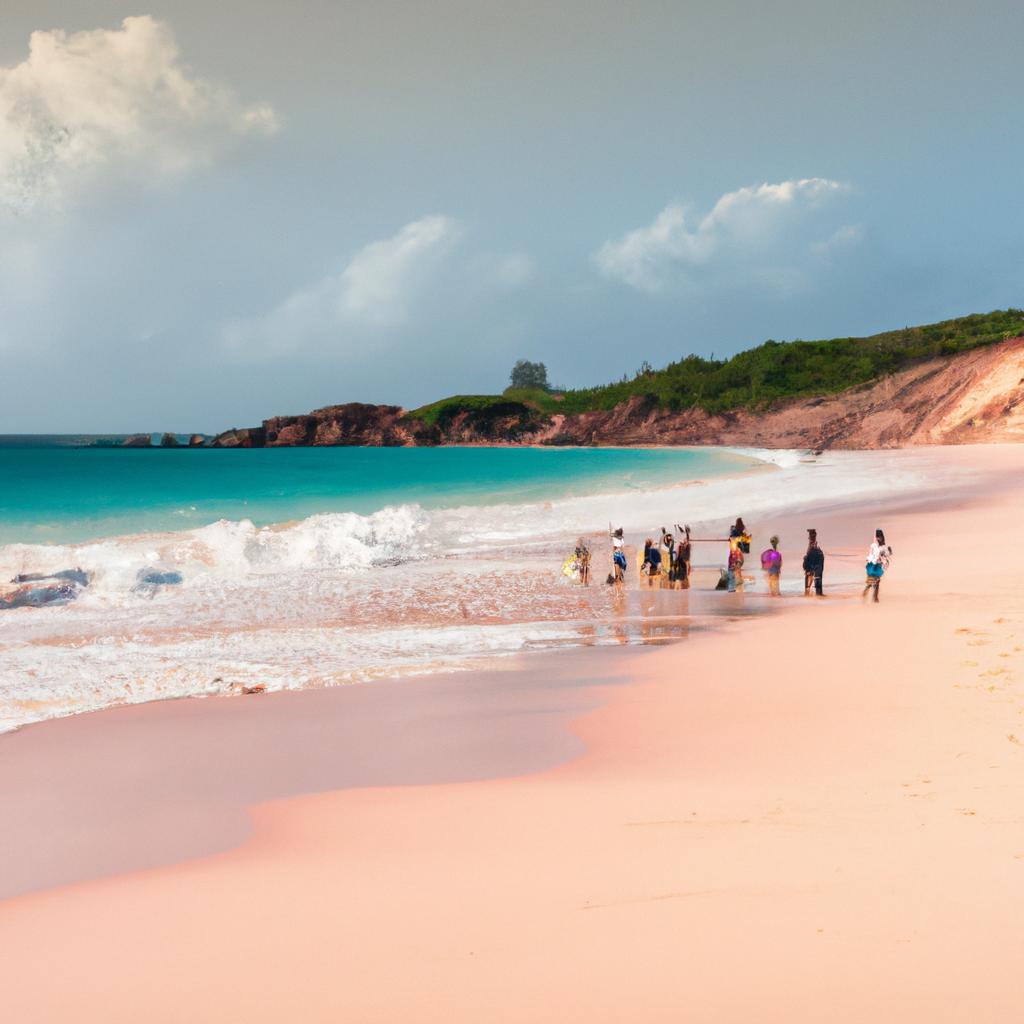
Pink sand beaches are not just visually captivating but also provide a flourishing ecosystem for diverse wildlife and marine life. From unique bird species to fascinating sea creatures, there’s plenty to discover and explore on these beaches.
Overview of the Unique Wildlife and Marine Life Found in Pink Sand Beaches
Australia’s pink sand beaches are home to various species of birds, including the endangered red-tailed tropicbird, which nests on Lady Elliot Island’s pink sand beach. The island is also a sanctuary for loggerhead turtles, manta rays, and humpback whales, which can be spotted during their migration season.
Other pink sand beaches, such as Honeymoon Bay and Pinky Beach, are popular among birdwatchers and offer glimpses of extraordinary species like the red-capped plover and the white-bellied sea eagle. These beaches also provide a habitat for various species of crabs, including the ghost crab and the sand bubbler crab.
Conservation Efforts to Protect the Ecosystem
As with any natural habitat, the preservation of the ecosystem of pink sand beaches is of utmost importance. Several conservation efforts are currently underway to safeguard the wildlife and marine life of these beaches. These efforts include habitat restoration, beach cleanups, and educational programs aimed at visitors.
For instance, Lady Elliot Island is a designated marine park within the Great Barrier Reef Marine Park. Visitors are required to follow strict guidelines to protect the environment. The island also operates an Eco Resort, which focuses on sustainable tourism and provides visitors with educational opportunities to learn about the island’s unique ecosystem.
Popular Activities for Wildlife and Marine Life Enthusiasts
If you’re interested in experiencing the wildlife and marine life of pink sand beaches up close, there are plenty of activities to choose from. Snorkeling and scuba diving are popular options, allowing visitors to explore vibrant coral reefs and encounter an array of fish and other sea creatures.
Birdwatching tours are also available on some beaches, providing an opportunity to spot unique bird species and learn about their habitats. For those who prefer to stay on land, walking tours and nature trails offer a chance to observe the wildlife and marine life from a safe distance.
With so much to see and discover, the diverse wildlife and marine life found in pink sand beaches are an integral part of the Australian experience.
How to Prepare for an Unforgettable Visit
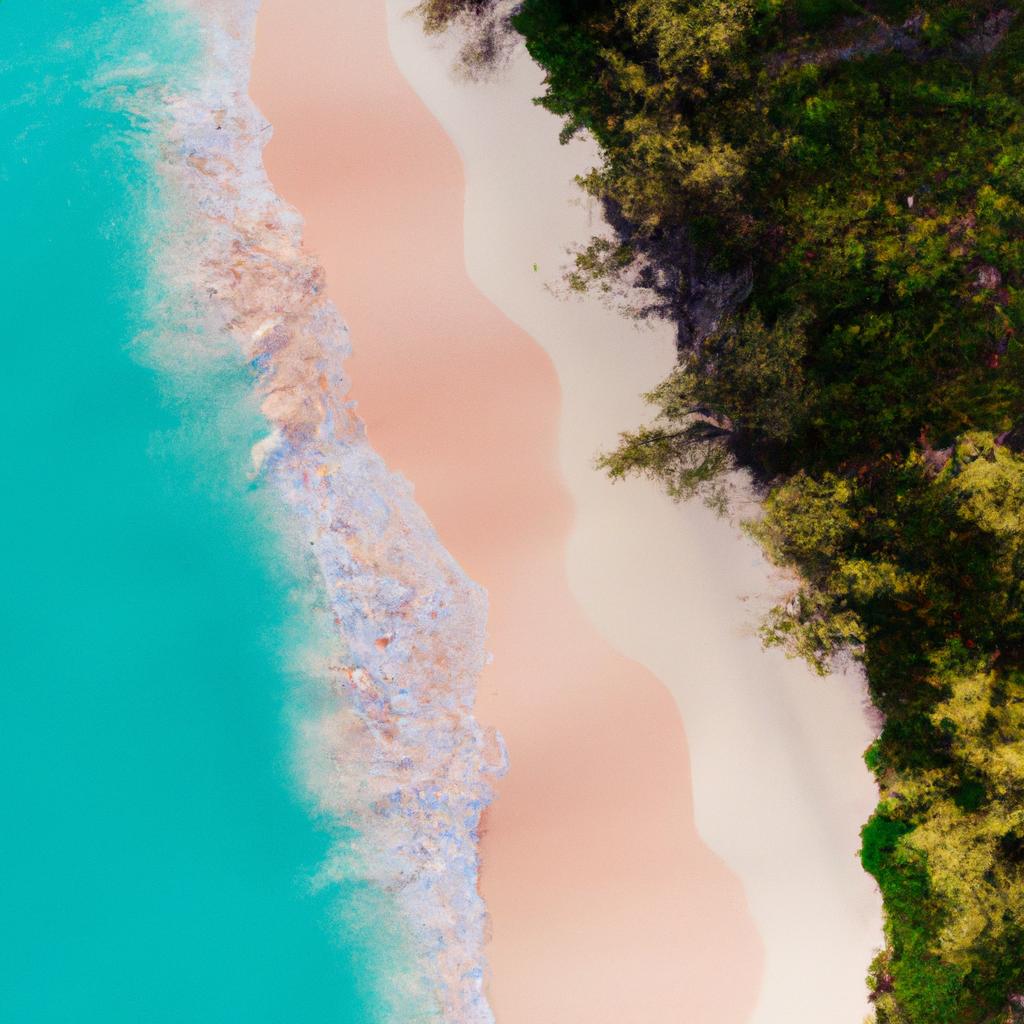
Planning a trip to Australia’s pink sand beaches? Here are some tips and recommendations to help you make the most of your visit.
Tips and Recommendations for Visitors
- Research the beach you wish to visit beforehand to ensure it aligns with your needs and expectations. Some beaches may offer seclusion, while others may have more amenities and attractions nearby.
- Pack essentials such as sunscreen, hats, and an ample supply of water to stay hydrated under the Australian sun. Consider bringing a beach umbrella or shade tent for added protection.
- If you plan to snorkel or swim, bring your own equipment if possible. Though some beaches may have rental facilities available, having your own gear ensures maximum comfort and safety.
- Respect the environment and local culture. Avoid littering, stay on designated paths, and be mindful of any cultural or spiritual significance associated with the beach.
Safety Precautions to Keep in Mind
- Always swim between the flags and follow any posted safety guidelines. Australian beaches can have strong currents and riptides, so it’s important to be aware of the conditions before entering the water.
- Be vigilant for wildlife, such as jellyfish or sharks. If you spot any dangerous creatures, immediately notify a lifeguard and follow their instructions.
- Stay hydrated and avoid overexertion in the heat. Take breaks in the shade and listen to your body if you start to feel overheated or unwell.
Best Time of Year to Visit
The ideal time to visit Australia’s pink sand beaches depends on your preferences and planned activities. Generally, the summer months (December-February) offer the warmest weather but can also be the busiest. For a more serene experience, consider visiting during the shoulder seasons of spring (September-November) or fall (March-May). Remember to check the local forecasts for specific beach and location weather conditions before finalizing your trip.
In Conclusion
Australia’s pink sand beaches are a true natural wonder, offering a unique and unforgettable travel experience. Not only are they visually stunning, but they also hold deep cultural and spiritual significance for many Indigenous Australians.
When planning your visit to Australia, make sure to explore some of the top pink sand beaches, including Lucky Bay, Honeymoon Bay, and Middle Island. Each beach boasts its own distinctive features and attractions, from swimming with dolphins to camping under the stars.
At TooLacks, we are passionate about nature and travel, and we invite you to discover Australia’s pink sand beaches for yourself. Experience the beauty and significance of these awe-inspiring beaches and create cherished memories that will endure a lifetime. TooLacks is here to help you embark on your unforgettable journey.
